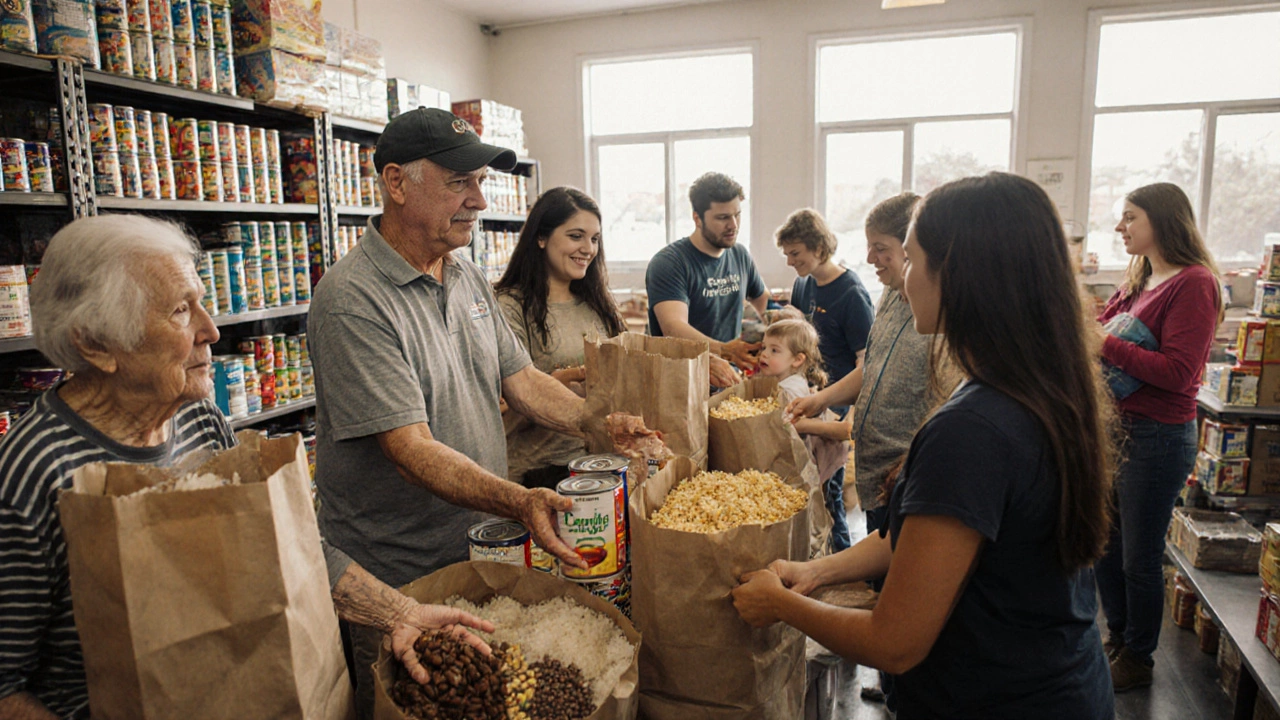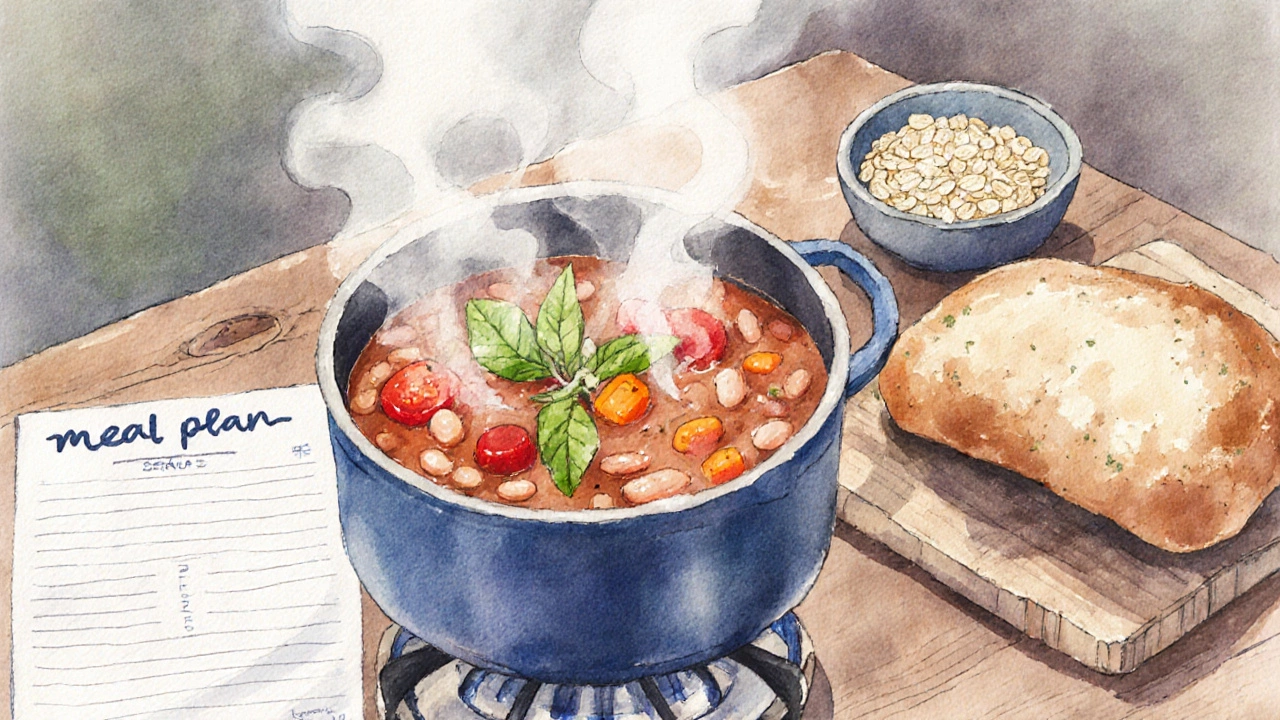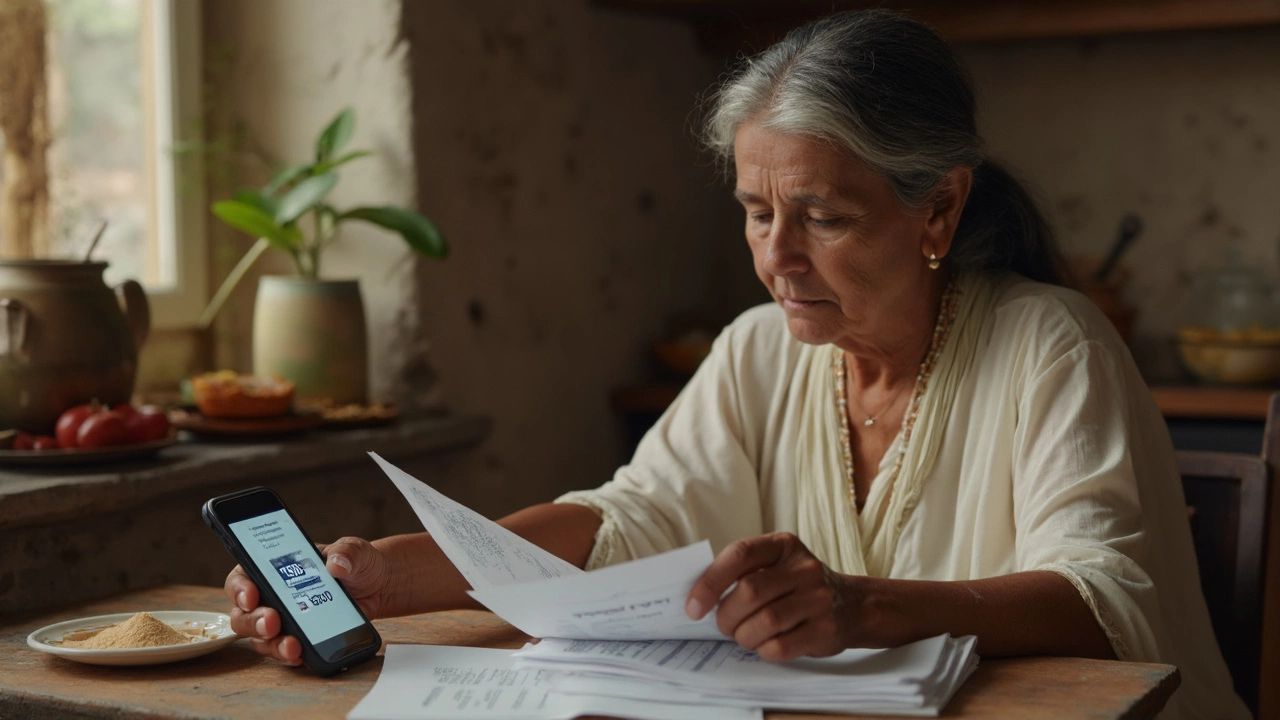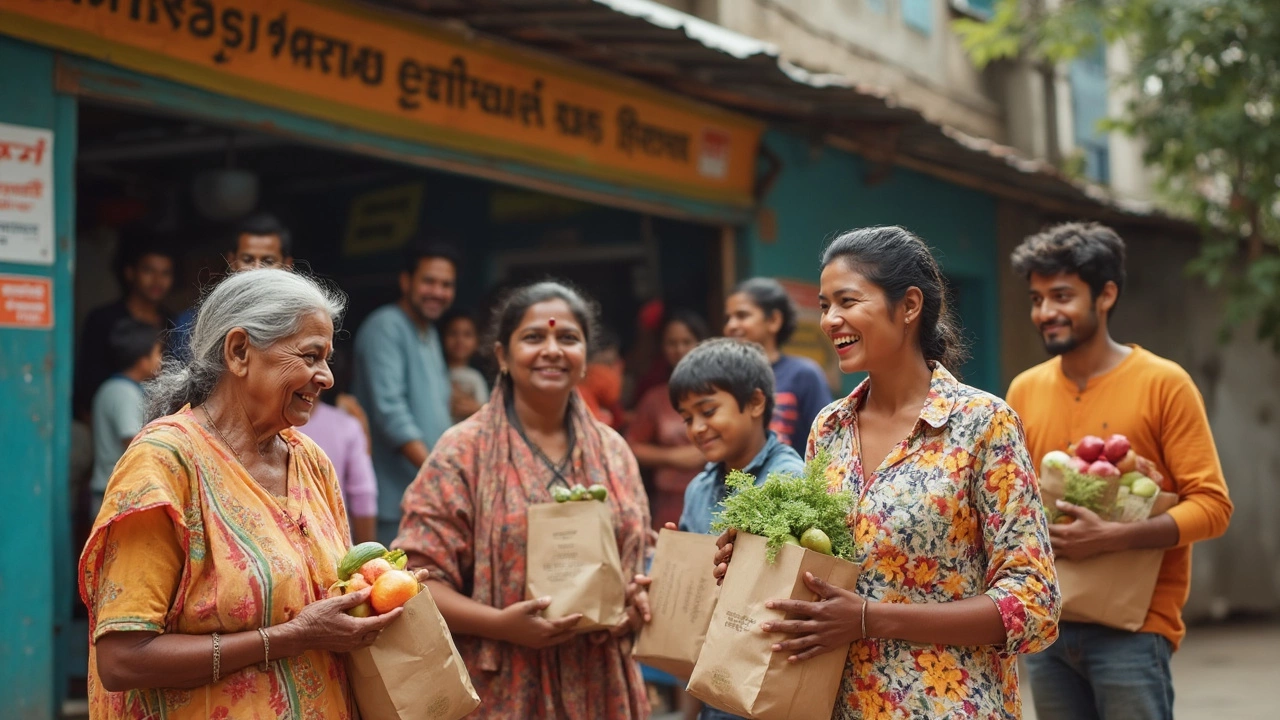Rumors about a $900 grocery stimulus for seniors have been everywhere lately, but is this offer real or just another internet rumor? This article digs into where the idea comes from, what help is actually out there for older adults struggling with grocery bills, and how to spot misleading scams. We'll spotlight real programs that offer food support and share practical tips for saving money on groceries. Stay informed to make sure you're getting real help—not empty promises.

- Created by: Lydia Carmichael
- Completed on: 8 Oct 2025
- Categories: Food Aid
Free Food Resource Finder
When your pantry is empty and cash is tight, the first thought is often "What can I eat?" The good news is you’re not alone, and there are practical ways to get a meal without spending a cent. Below you’ll find free food sources, simple recipes that stretch what you find, and safety tips to keep you healthy.
Key Takeaways
- Local food banks, soup kitchens, and community fridges provide free meals daily.
- Knowing what pantry staples to buy-or find-for cheap can turn a few cents into several nutritious dishes.
- Foraging safely for edible wild greens (often called bush tucker) adds variety without cost.
- Simple meal‑planning and storage tricks stretch every bite and reduce waste.
- Government assistance programs, like benefit payments, can supplement your food budget.
Understanding Food Insecurity
Food insecurity isn’t just about missing meals; it’s tied to health, stress, and community well‑being. In New Zealand, the Ministry of Social Development reports that over 15% of households struggle to afford enough food each week. Recognizing the issue helps you tap into the right resources without feeling ashamed.
Immediate Free Food Sources
Below are the most reliable places to get a hot plate or groceries without paying.
Food banks are non‑profit hubs that collect surplus groceries from retailers and redistribute them for free to people in need. Many operate on a drop‑in basis; just bring ID, a proof of address, and you’ll receive a bag of staples like rice, canned beans, and pasta.
Soup kitchens serve ready‑to‑eat meals, often in communal settings, usually three times a week. They’re ideal if you need a warm meal and a friendly environment.
Community fridges are public refrigerators placed in neighborhoods where anyone can leave or take food at any time. Look for them near libraries, churches, or community centers.
Free meal programs run by churches, NGOs, or local councils, offering scheduled lunch or dinner services. Many accept walk‑ins and don’t require paperwork.
Government assistance includes programs like the Emergency Benefit or the Welfare Supplement, which provide cash or vouchers that can be used for food. Applying is usually a short online form, and approval can be fast.

Comparison of Free Food Resources
| Resource | Typical Hours | What You Get | Eligibility | Contact / Location |
|---|---|---|---|---|
| Food bank | Mon‑Fri, 9am‑5pm | Bag of non‑perishables (rice, beans, canned veg) | Proof of residence, ID | Wellington Food Bank, 12Kelburn Rd |
| Soup kitchen | Tue & Thu, 12pm‑2pm | Hot meal (protein + veg + carbs) | No paperwork, open‑door | StJohn’s Community Centre |
| Community fridge | 24/7 | Any donated fresh produce, baked goods | Open to everyone | Near Wellington Library, 2nd floor |
| Free meal program | Sat, 10am‑12pm | Planned lunch (usually three‑course) | Usually none, sometimes referral | StMary’s Church Hall |
| Government assistance | Online/phone | Cash benefit or food voucher | Income test, residency | MSD website or local office |
Stretching What You Find: Budget‑Friendly Meals
Even with free food, you’ll want to make the most of each ingredient. Keep a small stash of pantry basics-these cost pennies and pair well with anything you receive.
- Rice and oats: High‑calorie, long‑shelf‑life carbs.
- Dried beans or lentils: Protein, fiber, and they cook in under an hour.
- Tomato paste or canned tomatoes: Adds flavor to soups, stews, and sauces.
- Seasonings: Salt, pepper, dried herbs (basil, oregano) turn bland dishes into tasty meals.
Here are three simple recipes you can throw together with a single pot.
- Hearty Bean Soup: Rinse 1 cup of mixed dried beans, soak 4hrs, then simmer with 4cups water, a spoonful tomato paste, a diced carrot (if available), and a pinch of salt. Cook until beans are soft-about 45 minutes. Eat with a slice of bread from a food‑bank bag.
- One‑Pan Rice Pilaf: Heat 1tbsp oil, add ½ cup rice, toast 2mins, then pour in 1cup water, a handful of frozen peas (often donated), and a dash of soy sauce if you have it. Cover and simmer 15mins.
- Oat‑and‑Banana Pancakes: Mash one ripe banana (frequently given in fruit donations), mix with ½ cup oats, a splash of milk (or water), and a pinch of cinnamon. Cook small pancakes on a hot skillet for 2‑3mins each side.
All three meals stay under $0.10 per serving if you source the main ingredients from free sources.
Foraging & Natural Foods
NewZealand’s coastline and bush offer edible treasures that cost nothing. Bush tucker refers to native plants like rimu leaves, kawakawa shoots, and the hardy seaweed kelp. Before you pick, double‑check identification guides (available at public libraries) to avoid poisonous look‑alikes.
Safe foraging tips:
- Start with one species you can identify confidently.
- Harvest from clean, unpolluted areas-avoid roadsides.
- Wash thoroughly and cook leafy greens to reduce bitter compounds.
Even a handful of boiled kawakawa shoots adds a peppery note to your bean soup.

Planning and Storing
Good planning turns a random bag of food into a week’s worth of meals.
- Meal‑plan on paper: List what you have (e.g., rice, beans, carrots) and assign each to a day.
- Batch‑cook: Make a big pot of soup on Sunday, portion into containers, and reheat as needed.
- Cool‑store wisely: Use airtight containers; if fridge space is limited, store cooked beans in a large thermos.
When you know exactly what you’ll eat, you avoid impulse purchases and waste.
Staying Safe & Healthy
Nutrition matters, even on a shoestring budget. Aim for a balance of carbs, protein, and vegetables in each meal. If you’re relying heavily on canned items, rinse them to cut sodium. Hydration is key-drink water regularly, especially if you’re eating high‑fiber beans.
If you have any health conditions (diabetes, hypertension), prioritize low‑salt options and speak with a community health nurse-many clinics offer free nutritional advice.
Next Steps & Troubleshooting
Use this quick decision tree:
- Do you have any food at home?
Yes → Check pantry staples, cook a simple recipe.
No → Go to the nearest food bank or soup kitchen. - Did you receive enough for a week?
Yes → Plan meals, store leftovers.
No → Look for a community fridge or schedule a second visit. - Want more variety?
Consider safe foraging or ask local charities for fresh produce vouchers.
If you hit a roadblock-like a closed food bank-call the local council’s social services line. They can redirect you to the next open location.
Frequently Asked Questions
What documents do I need to access a food bank?
Usually a photo ID and a recent utility bill or rental agreement. Some banks accept a letter from a social worker if you don’t have a bill.
Are community fridges safe to use?
Yes, as long as you follow basic hygiene: wash hands, inspect food for spoilage, and only take items that look fresh. Many fridges are monitored by volunteers who clean them regularly.
Can I get cash assistance for food in Wellington?
The Ministry of Social Development offers the Emergency Benefit and Welfare Supplement, which can be used for groceries. Applications are online and typically processed within two weeks.
What are some easy foods to cook with only a kettle?
Instant oatmeal, couscous, and pre‑cooked lentils all rehydrate in hot water. Add a squeeze of lemon, a dash of soy sauce, and any fresh herbs you’ve foraged for a quick, nutritious meal.
How do I identify safe edible plants?
Use a reputable field guide (e.g., "New Zealand Native Plants"), join a local foraging walk, or ask a volunteer at a community garden. Never eat a plant unless you’re 100% sure it’s not toxic.
Learn how to get free meals, use pantry basics, and safely forage for food when you have no money. Practical tips, resources, and easy recipes guide you through food insecurity.
Need help getting groceries? This guide explains how anyone can apply for help from a local food bank. You'll learn about eligibility, application steps, and what to expect during your first visit. Find out how food banks really work and get tips that make the process smoother. Clear answers for anyone worried about food insecurity.

